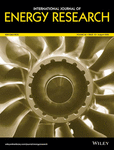Trash to treasure: Fallen leaves as separators for supercapacitors
Funding information: American Chemical Society Petroleum Research Fund, Grant/Award Number: PRF-60329-ND10; National Science Foundation of United States, Grant/Award Number: CMMI-1661699
Summary
Electrochemical double-layer capacitors are an essential type of energy-storage devices due to their fast charge/discharge rate, ultralong cycle life, and safe operation. A separator plays an important role in supercapacitors to prevent short circuit while allow ions to move through its porous structure. Herein, we demonstrated fallen leaves as efficient separators in supercapacitors with dense mesoporous carbon electrodes, achieving a high areal capacitance of 1.94 F/cm2. Among four leaves, Quercus rubra leaf exhibited the best electrochemical performance as a separator for supercapacitors, which is even comparable to the commercial glass fiber separator. This finding provides an approach not only to transfer waste into treasure but also to develop sustainable separators for energy-storage devices.
CONFLICT OF INTERESTS
The authors declare no conflicts of interest.
Open Research
DATA AVAILABILITY STATEMENT
The data that supports the findings of this study are available in the supplementary material of this article.




